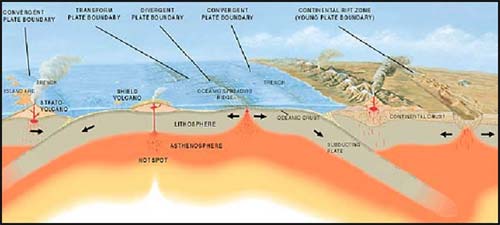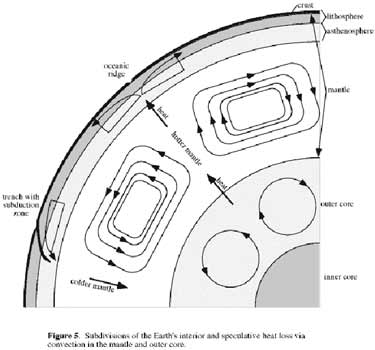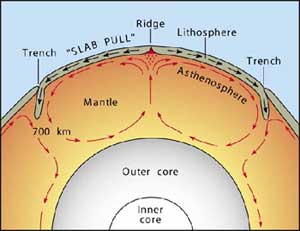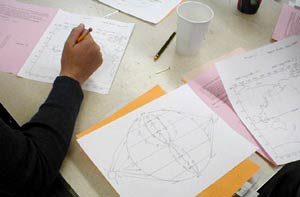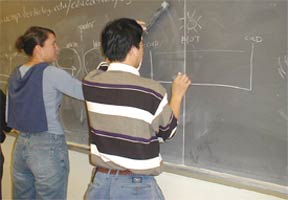|
|
return to
|
||||||||
Convection Currents:
Currents in the Earth's System |
|||||||||
Convection currents occur within:
Focus Question: What is the source of energy for convection currents in the geosphere?Convection currents in the magma drive plate tectonics.
Heat generated from the radioactive decay of elements deep in the interior of the Earth creates magma (molten rock) in the aesthenosphere.
Large convection currents in the aesthenosphere transfer heat to the surface, where plumes of less dense magma break apart the plates at the spreading centers, creating divergent plate boundaries. As the plates move away from the spreading centers, they cool, and the higher density basalt rocks that make up ocean crust get consumed at the ocean trenches/subduction zones. The crust is recycled back into the aesthenosphere. Subduction of Plates
Focus Question: Where is the source of heat in the atmosphere-hydrosphere system?The source of heat is from the sun, above.
This led to discussions about the multiple currents/cells that are driven by unequal heating driving currents both vertically (creating high and low pressure systems by descending and ascending air masses) and horizontally. Focus Question: If the hydrosphere were a closed system with only an external source of heat from the sun, what simple temperature patterns would you expect to see in the ocean basins?One would expect to see warmer temperatures at the equator and cooler temperatures at the poles leading to two large convection cells from the equator to the poles, one in each hemisphere. Teachers map their hypotheses:
Focus Question: How well does this simple basin model illustrate the real convection cells in the ocean-atmosphere system?The teachers pondered this and other questions to be addressed further during Session #2 on November 2, 2002.
|
|||||||||
|
Return to: What's Current | Dynamic Earth Homepage | UCMP Homepege |
|||||||||
